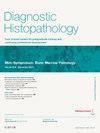Nanopore-based brain tumour classification: the harbinger of near-patient, ultra-rapid tumour sequencing
引用次数: 0
Abstract
Advances in both our understanding of tumour biology and our technological capacity to interrogate these molecular characteristics have led to the ever-increasing use of genomic sequencing in routine diagnostic decision making, long offering the hope of more efficacious personalized cancer therapies. Yet, despite this fidelity, in order that genomic testing is truly able to deliver its promise of better outcomes for patients, it is vital that such testing can be performed within a clinically relevant timeframe. Presently, molecular diagnosis of brain tumours is largely delivered via an effectively centralized model as few institutes possess the necessary facilities. Yet, this approach has inherent delays that mean a wait, often of several weeks, before the diagnosis is available to the treating clinical team. This review introduces Nanopore sequencing, a long-read technology that can be used to enable rapid and comprehensive molecular diagnosis. The epigenetic signatures of brain tumours have been shown to reliably segregate tumour subtypes, and methylation-based tumour classification now forms a cornerstone of neuropathological diagnosis. Crucially, Nanopore is a direct-strand sequencing technology which can detect methyl DNA modifications, alongside base-calling, delivering methylation classification in parallel with copy number, fusion and mutation detection as well as single gene methylation analysis. This review summarises the present state of nanopore sequencing for brain tumour diagnostics and highlights areas for further development.
基于纳米孔的脑肿瘤分类:近距离、超快速肿瘤测序的先兆
我们对肿瘤生物学的了解和分析这些分子特征的技术能力都在不断进步,这使得基因组测序在常规诊断决策中的应用日益广泛,长期以来为更有效的个性化癌症疗法带来了希望。然而,尽管如此,为了使基因组检测能够真正兑现为患者提供更好治疗结果的承诺,在临床相关的时间范围内进行此类检测至关重要。目前,脑肿瘤的分子诊断主要通过有效的集中模式进行,因为只有少数机构拥有必要的设施。然而,这种方法存在固有的延迟,这意味着临床治疗团队需要等待数周才能获得诊断结果。本综述介绍了纳米孔测序技术,这是一种可用于快速、全面分子诊断的长读数技术。脑肿瘤的表观遗传学特征已被证明能可靠地区分肿瘤亚型,基于甲基化的肿瘤分类现已成为神经病理学诊断的基石。最重要的是,Nanopore 是一种直接链测序技术,它可以检测 DNA 甲基修饰,同时还能进行碱基调用,在进行拷贝数、融合和突变检测以及单基因甲基化分析的同时进行甲基化分类。本综述总结了纳米孔测序在脑肿瘤诊断中的应用现状,并重点介绍了有待进一步发展的领域。
本文章由计算机程序翻译,如有差异,请以英文原文为准。
求助全文
约1分钟内获得全文
求助全文
来源期刊

Diagnostic Histopathology
Medicine-Pathology and Forensic Medicine
CiteScore
1.30
自引率
0.00%
发文量
64
期刊介绍:
This monthly review journal aims to provide the practising diagnostic pathologist and trainee pathologist with up-to-date reviews on histopathology and cytology and related technical advances. Each issue contains invited articles on a variety of topics from experts in the field and includes a mini-symposium exploring one subject in greater depth. Articles consist of system-based, disease-based reviews and advances in technology. They update the readers on day-to-day diagnostic work and keep them informed of important new developments. An additional feature is the short section devoted to hypotheses; these have been refereed. There is also a correspondence section.
 求助内容:
求助内容: 应助结果提醒方式:
应助结果提醒方式:


